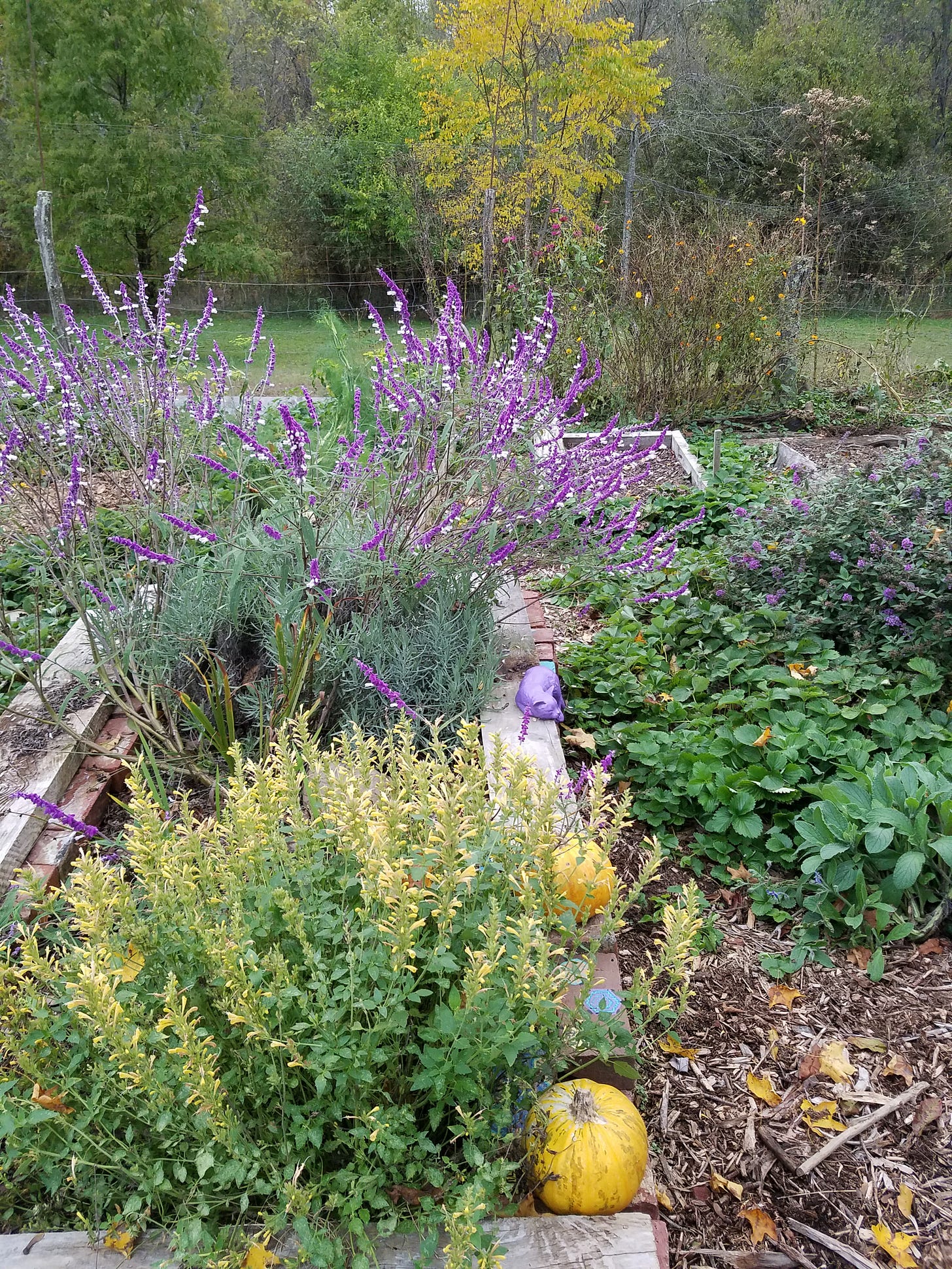Spreading out the work
A little bit at a time means you're never overwhelmed
Creating a garden where none was before is an exciting, noble, and exhausting endeavor. Did you catch the gardening bug this spring and now find yourself wondering if it's worth the work? The majority of the work of any garden, new or mature, is concentrated in the spring, but to some degree it can be spread throughout the year to minimize the spring crunch and consequent burn-out. The first step is accepting that you may not have the garden of your dreams the first year, but if you work at it little by little, each year will be better than the last.
Here's my breakdown of chores by season. Many of these tasks can be done any time during the year, and in fact most are done every season, a little bit at a time. Others are very season-specific, but can be spread out over several weeks to lighten the load.
Summer
Summer is the height of the gardening year and means an explosion of bounty, the payback for all the time spent heretofore. If I've done well the previous seasons, the biggest summer job is harvesting, (and cooking and eating!) I don't can; in fact I do hardly any preserving. I grow veggies that keep with minimal processing like potatoes, garlic, and onions. These are harvested in summer, so some time must be spent drying and curing before storage. There are other small jobs in summer like pruning and suckering tomatoes, and of course late summer means seeding turnips, kale, and other greens for fall harvest.
Mostly it's just too hot to be in the garden except for early mornings and evenings, so only the necessities get done during this season. I try not to water, but during exceptionally dry times I irrigate plants if I think their lives are in danger. I also keep the garden tidy which means weeding whenever possible, and removing over-ripe tomatoes and zukes and cukes grown too large. These fruits go straight to the chickens who go wild for them.
Autumn
Fall can be a relaxed time in the garden. Weeds are not such a big problem because desirable plants have reached maximum growth and are shading and crowding out the undesirables, and conditions are usually drier, preventing new weeds from sprouting. However, it's a good time to patrol for perennial weeds that are hiding in plain sight and remove them before they set seed. If I look closely I find wingstem, violets, and goldenrod among the veggies and berries.
Of course, a lot of time is still spent harvesting, but after first frost—usually in October—I yank all the frost-killed plants and compost them, and plant garlic. Since it's now cooler I start preparing beds for next year by adding compost and topping with hay, leaves, or wood chips. This is one of the most important tasks of the year since it means beds are ready for spring planting, minimizing work during that hectic season.
Winter
If there is snow cover or very cold temperatures I do very little in the garden and consider this my vacation from it. I haul in manure from the barn to build compost piles, but that's about it. During mild spells I continue the process begun in the fall of preparing beds for spring. I rake back the wood chips in paths and dig out the rich layer beneath to add to beds, then top off paths with fresh chips. I take compost from piles that have broken down sufficiently to spread on beds also. A layer of spoiled hay or partially decomposed chips as a final layer will suppress winter annuals and reduce the spring workload immensely.
If winter annuals are appearing, which happens in particularly mild winters, I pull them. Repairing or replacing bed edging and establishing new beds are great jobs for this slow season, as are pounding stakes for tomato support, and installing trellises and arches. These tasks can be done any season, but I concentrate them in winter because I have plenty of time.
Spring
Spring means weeding and planting, then more weeding and planting. When temperatures warm slightly, winter annuals take off, so in early spring I take daily walks around the garden, pulling bittercress and dead nettle as I go. All the bed prep of the previous seasons now pays off, but weeds still flourish here and there. Daily maintenance means they never get out of control.
I start planting as early as possible in March, beginning with spinach, lettuce, and other greens, and progressing to peas, potatoes, carrots, and more greens. Each weekend I plant a bed or two, so the work is spread out. Once danger of frost is over, there's a big push to get things like tomatoes, peppers, and eggplant in, but planting doesn't have to be done all at once. I distribute it over a couple of weekends so it's not overwhelming.
Since I have permanent beds and paths that I maintain throughout the year, there's no tilling to be done. I can't emphasize enough that tilling causes more problems than it solves. In addition to the damage to soil caused by tilling, waiting for dry enough weather in the spring so you can till can set you back significantly, and mean lots of work piles up. No matter the time of year, you can start establishing beds and save yourself time and headaches in the spring. Plus you'll have more time for this season's most important job of all: relaxing and soaking up the glory of the garden in spring.









